HP is renowned for its consumer-grade laptops focused on professional work while also being highly portable. The HP Pavilion x360 2023 2-in-1 is one such offering from the company that can be considered a mix of efficiency and portability. I have personally used several HP products over the past few years and have come out impressed. The Pavilion x360 runs on the latest 13th gen Intel i5 processor and is priced at Rs 83,999. In this review, let’s look at what the laptop offers and if it can be considered a step above its competitors.
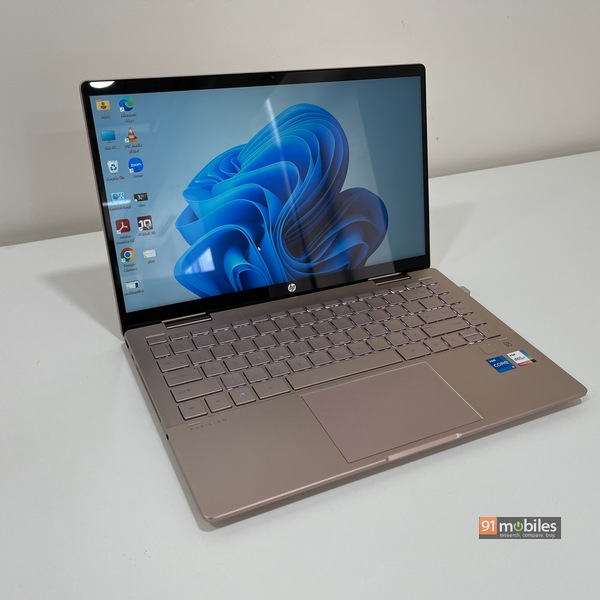
Build, design, and display
The new HP Pavilion x360 has been constructed using a polycarbonate material giving it a rather lightweight build. Combining that with the fact that the device has a 14-inch display, a small chassis, and a depth of just about 1.89cm, sliding it into a backpack is not going to be an issue. There’s also the hinge which allows for a full 360-degree movement of the display and turns the laptop into a tablet. A webcam is present on the top bezel for video calling and facial authentication. Finally, the device has a soft silver finish across the chassis and the lid, which adds to the laptop’s premium appearance.
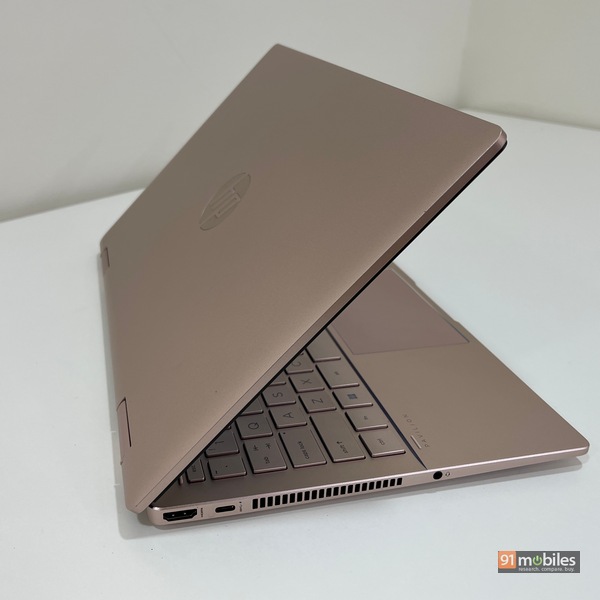
Also read – Samsung Galaxy Book3 Pro 360 review: the power to create
For connectivity, there is a USB Type-C port that supports power delivery and DisplayPort 1.4. Apart from that you also get two USB 3.2 Type-A ports, a microSD card slot, and a 3.5mm headphone jack. You also get a fingerprint sensor and wireless connectivity is facilitated by Wi-Fi 6E and Bluetooth 5.3.
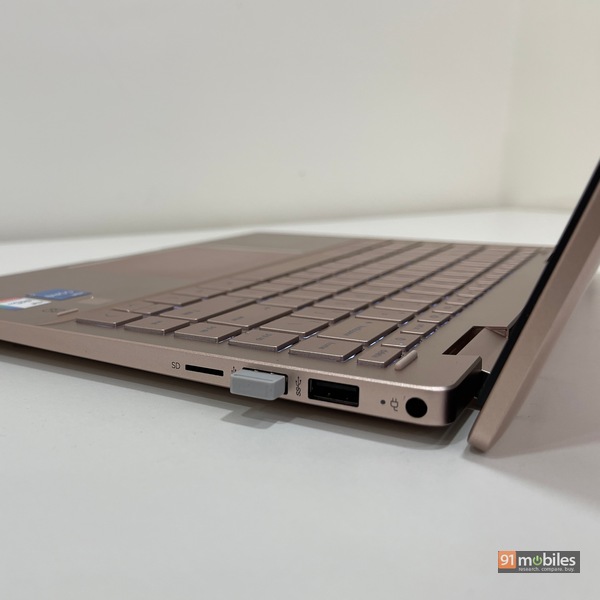
Display-wise the laptop has a 14-inch IPS LCD panel with multi-touch enabled and reasonably small bezels surrounding it. In terms of its brightness levels, the screen is said to max out at 250 units, which I think is slightly lower than I would’ve liked. Also, there is a rather reflective coating present on the panel which could wash out the screen if a light source is shining directly on it.
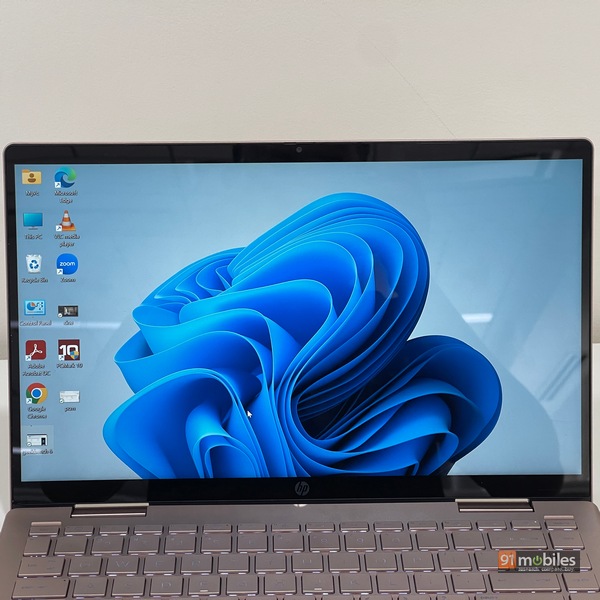
For regular usage and media consumption, the device is decent enough. There’s a 45 percent coverage NTSC colour gamut which isn’t great by any stretch of the imagination, but then again the laptop is not meant to accomplish a lot of photo editing or colour correction tasks. The touchscreen functionality is passable in my opinion and its response can be finicky at times. I think that the HP x360 fulfils its role as a reliable intermediary between watching movies/TV shows on the go while also getting some work done.
Keyboard and trackpad
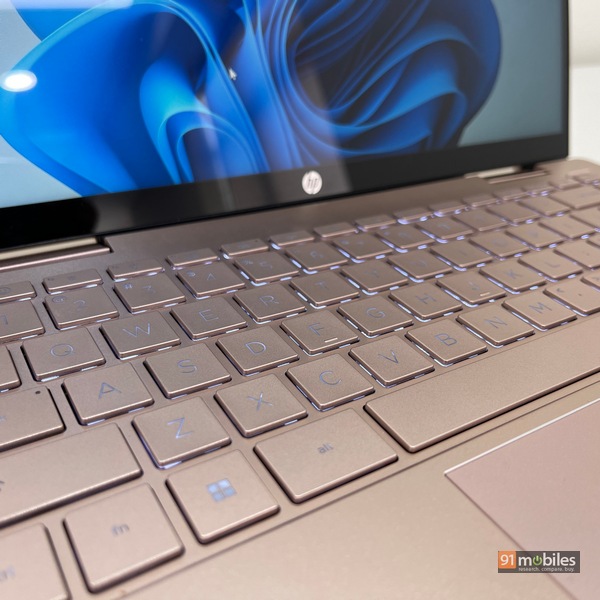
The compact form factor doesn’t limit the spacing of the keys and it makes for a satisfactory typing experience. There’s also backlighting which is adjustable to two levels which helps ease of use in low-light conditions. Travel for each key is a bit shallow and the response is adequate for my needs. As for the trackpad, the surface area is not the largest but the glass material used allows my finger to effortlessly glide across. Latency issues can persist especially while using the display’s touch functionality. My recommendation would be to attach an external mouse instead of completely relying on the trackpad.
Performance and battery
The HP Pavilion x360 uses an Intel i5-1335U processor which is a 10-core CPU with eight efficiency cores and two performance cores. With Turbo enabled the chipset can achieve a clock speed of 4.6GHz and it has a maximum TDP of 55W. As far as cooling goes, there is a thermal outlet on the left side but that’s about it. Under sustained load, the device’s operation can appear a bit choppy and the base of the keyboard gets a bit hot. However, with my regular work, which uses several Chrome tabs and the usual bunch of productivity apps, there wasn’t any issue at all.
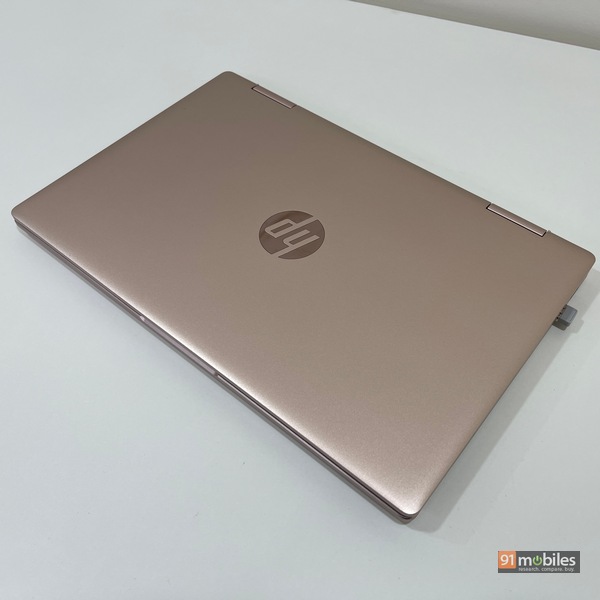
In terms of memory, the laptop has 16GB of LPDDR4 RAM and 1TB PCIe NVMe SSD. For most users that is likely to be enough for all basic work. Benchmark numbers are in line with Intel’s U series chipsets wherein Geekbench 6 shows a multi-core result of 7,139 while on Cinebench R23 that number dips to 5,583. Again, as I mentioned normal usage involving Google Chrome and a couple of Microsoft applications did not pose any problems.
The graphics are handled by an integrated Iris Xe GPU. I don’t recommend running any AAA titles on the device but some light gaming like CS: GO at low graphic settings would be acceptable. The speakers on the bottom are not loud enough for media consumption and it is preferable to use external audio peripherals for a better experience.
As for the battery life, the x360 has a 43Whr cell that can be juiced up at 65W with the adapter provided with the box. Again my usage is not the most intensive and I kept the device mostly on charge during my time. I did get about five hours of usage on battery while watching several episodes of 24 which is not bad at all. There’s a fingerprint sensor as well that is not all that good and required several attempts to authenticate.
Verdict
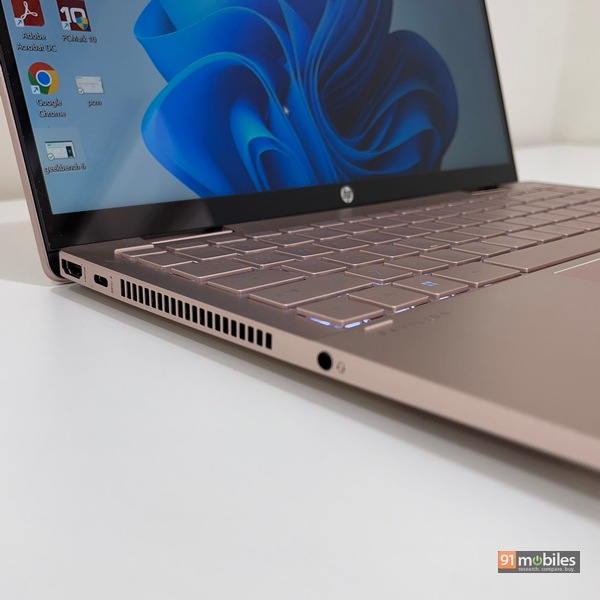
The HP x360 is an affordable and lightweight 2-in-1 laptop that caters to professional users with light workloads. It offers decent performance with a 13th-gen Intel i5 processor but isn’t suitable for heavy-duty tasks. The battery lasts around five hours, and it features a responsive keyboard with adjustable backlighting and various connectivity options. Overall, it serves as a handy companion for professionals seeking portability and versatility in their workflow.
Editor’s rating: 3.5 / 5
Reasons to buy
- The device is highly portable and lightweight
- Performance levels are acceptable to handle daily workloads
- The typing experience is pretty decent
- Plenty of I/O options on the device to attach various peripherals
Reasons not to buy:
- The speakers could do with some improving
- The device is not meant for extremely heavy tasks like intensive gaming
- Response of the touch screen could be better
The post HP Pavilion x360 2023 2-in-1 review: a versatile choice first appeared on 91mobiles.com.
0 Comments